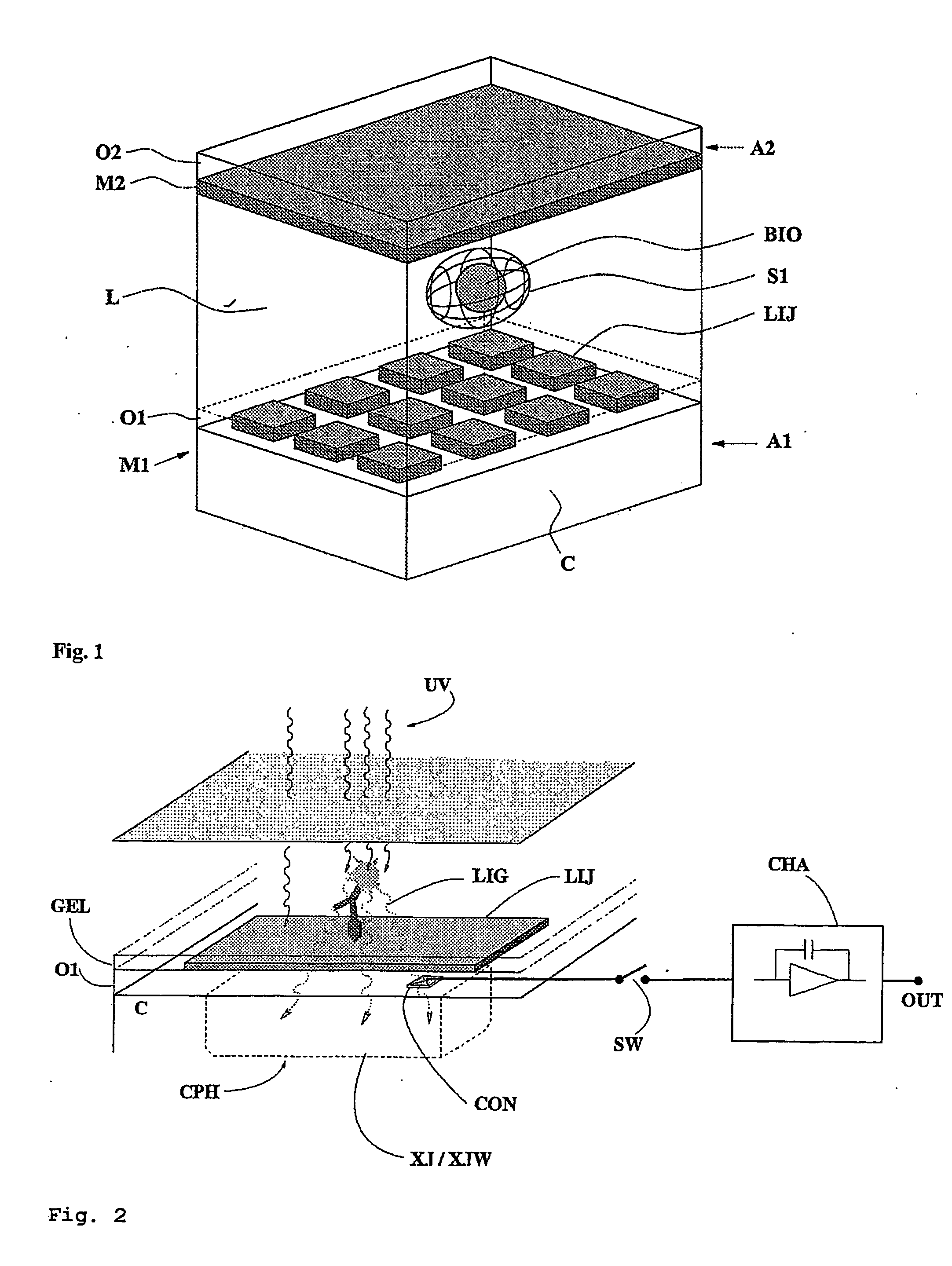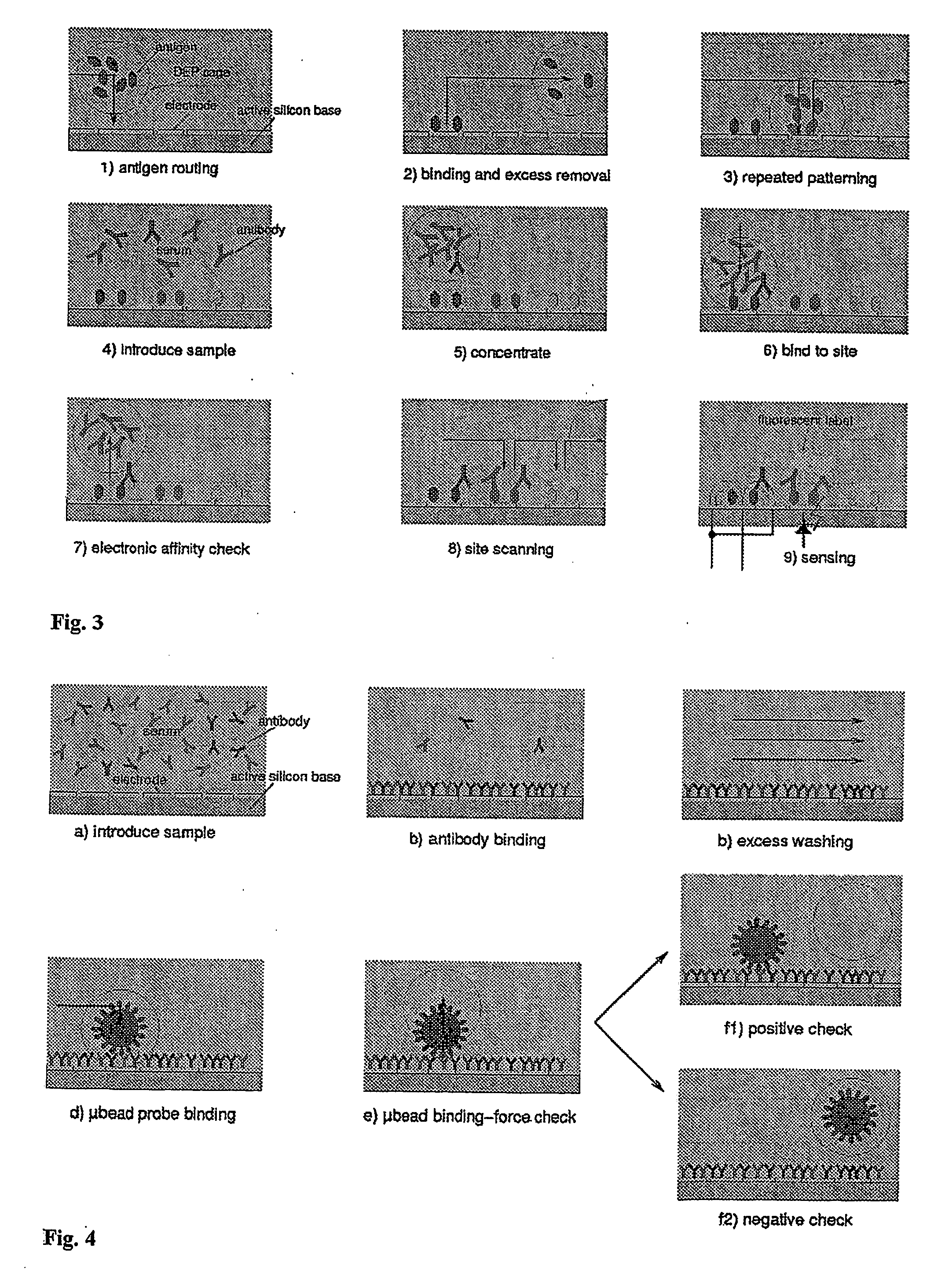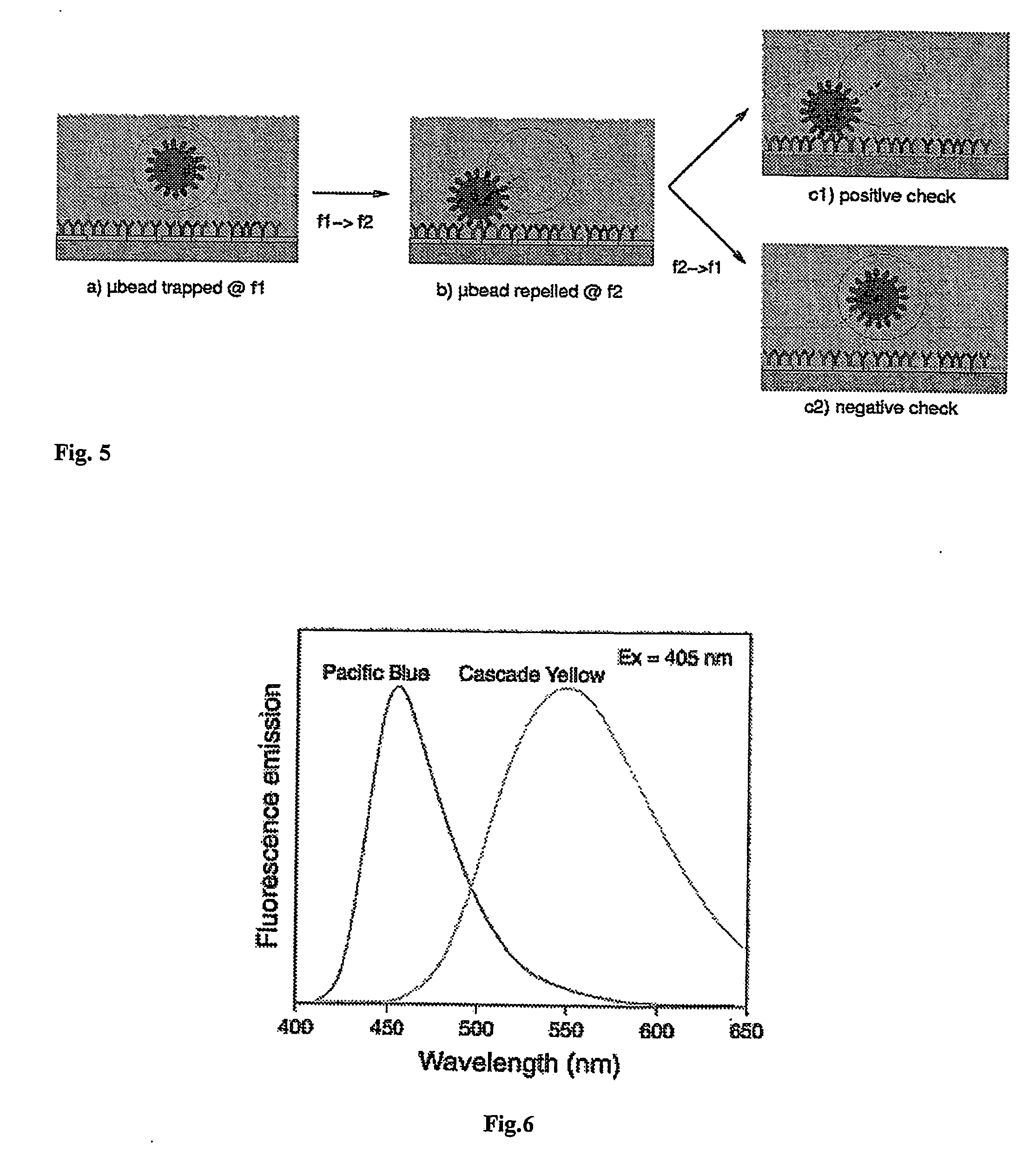Method and device for integrated biomolecular analyses
a biomolecular analysis and integrated technology, applied in the field of molecular biological analysis, can solve the problems of limited average life of radioactive isotopes used for labelling purposes, limited eia methods, serious limitation of low productivity, etc., and achieve rapid, efficient and economical results. , the effect of high processivity
- Summary
- Abstract
- Description
- Claims
- Application Information
AI Technical Summary
Benefits of technology
Problems solved by technology
Method used
Image
Examples
Embodiment Construction
[0053] With reference to FIGS. 1 and 2, the device disclosed in patent application PCT WO / 00 / 69565 (or a similar prior art device) is equipped according to the present invention with optical sensors capable of indicating the presence or absence of a biological element suspended in buffer solution within a dielectrophoretic cage. The electrode LIJ affords an opening, or window, of dimensions such as will not significantly affect the dielectrophoretic potential generated but nonetheless allow the passage of a certain amount of light radiation coming from a source external to device. The lid A1 is conventional in embodiment, fashioned from a semi-transparent conductive material in such a way that the transmission of the light radiation will not be impeded. The space beneath the window in the electrode LIJ is occupied by a silicon substrate C and, conventionally, a charge-storage junction photodiode CPH. The presence or absence of the biological element BIO will influence the amount of ...
PUM
| Property | Measurement | Unit |
|---|---|---|
| Fraction | aaaaa | aaaaa |
| Time | aaaaa | aaaaa |
| Force | aaaaa | aaaaa |
Abstract
Description
Claims
Application Information
 Login to View More
Login to View More - R&D
- Intellectual Property
- Life Sciences
- Materials
- Tech Scout
- Unparalleled Data Quality
- Higher Quality Content
- 60% Fewer Hallucinations
Browse by: Latest US Patents, China's latest patents, Technical Efficacy Thesaurus, Application Domain, Technology Topic, Popular Technical Reports.
© 2025 PatSnap. All rights reserved.Legal|Privacy policy|Modern Slavery Act Transparency Statement|Sitemap|About US| Contact US: help@patsnap.com



